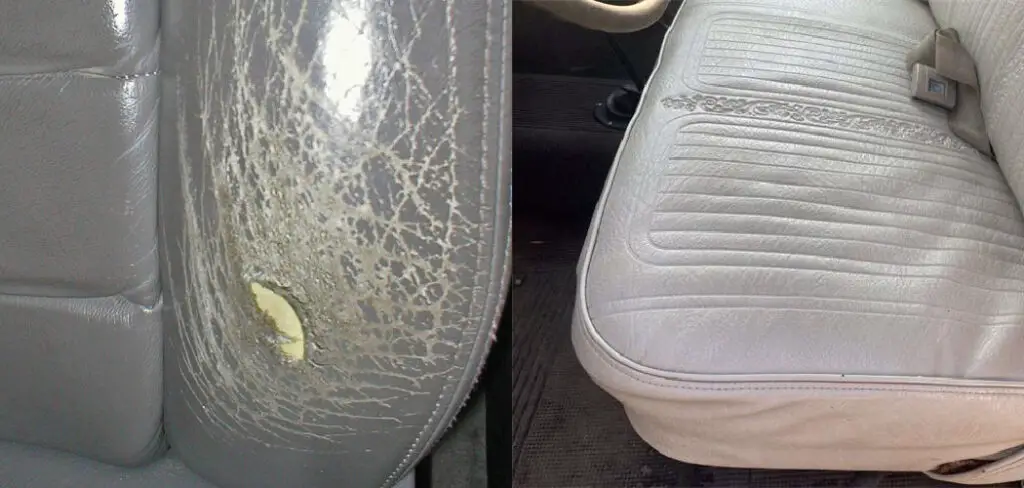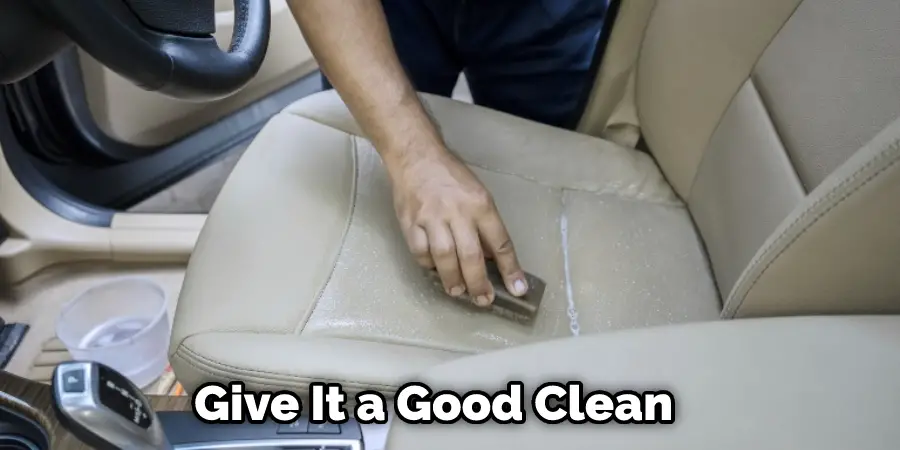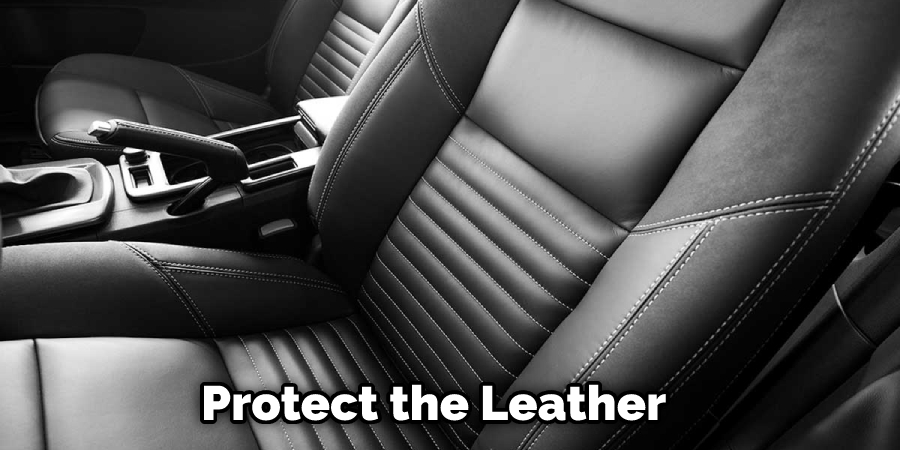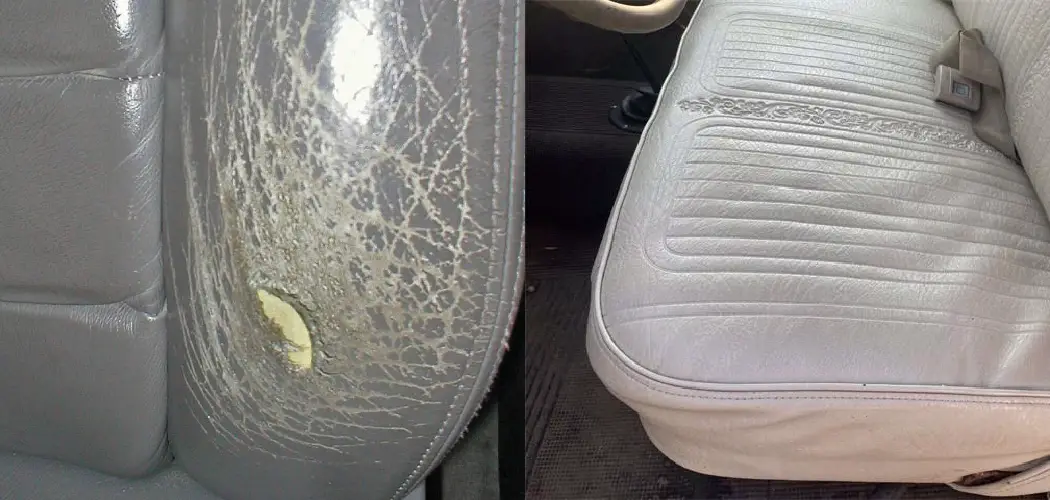Leather car seats are a luxurious addition to any car. However, over time they can become stained and faded. If you have some basic knowledge of how to recondition leather car seats, you can restore them to their original condition. In this post, we will show you how to do it yourself. Keep reading for instructions on how to get the job done right!

Why Should You Recondition Leather Car Seats?
Over time, leather car seats can lose their supple feel and begin to look dry and cracked. While this may not affect the performance of the seats, it can certainly detract from the overall look of your vehicle. Luckily, there is a simple solution: leather seat reconditioning. This process helps to replenish the natural oils in the leather, giving it a softer, more luxurious feel.
In addition, reconditioning can also help to prevent further damage, such as sun fading and cracking. As a result, it is well worth taking the time to recondition your leather car seats on a regular basis. Not only will they look better, but they will also be more comfortable for you and your passengers.
7 Steps to Follow on How to Recondition Leather Car Seats
If you have leather car seats, you know how great they look—when they’re new. But over time, even the best leather can start to show its age. Cracks, fading, and general wear and tear can make your once-sharp seats look dull and dated. But there’s no need to worry! With a little elbow grease (and the right products), you can recondition your leather car seats and make them look new. Here’s how:
Step 1: Clean the Seats
Before you start reconditioning, you need to give the seats a good cleaning. First, remove all the dirt, grime, and debris built over time. You can do this by vacuuming the seats with a soft-bristled attachment and then wiping them down with a damp cloth. Be sure to clean in between all the cracks and crevices! Once you’re finished cleaning, let the seats dry completely before moving on to the next step.

Step 2: Condition the Leather
Just like your skin, leather needs to be conditioned to stay healthy and supple. Otherwise, it will become dry, brittle, and more susceptible to cracking. Use a quality leather conditioner and apply it evenly over the seats. Be sure to work it into all the cracks and crevices. Once you’re finished, let the conditioner soak in for at least 15 minutes before moving on.
Step 3: Protect the Leather
After you condition the leather, it’s important to protect it from future damage. Use a quality leather protector and apply it evenly over the seats. This will create a barrier between your seats and the elements, helping to keep them looking new for longer.
Step 4: Clean the Seats Again
After you condition and protect the leather, give the seats another good cleaning. You can use a slightly damp cloth this time since the leather is now protected. Wipe down the seats, being sure to clean in between all the cracks and crevices. Once you’re finished cleaning, let the seats dry completely.
Step 5: Condition the Leather Again
After you clean the seats for the second time, you need to condition them again. This will help restore any lost moisture and keep the leather looking healthy. Use a quality leather conditioner and apply it evenly over the seats. Be sure to work it into all the cracks and crevices. Once you’re finished, let the conditioner soak in for at least 15 minutes before moving on.
Step 6: Protect the Leather Again

After you condition the leather for the second time, it’s important to protect it from future damage. Use a quality leather protector and apply it evenly over the seats. This will create a barrier between your seats and the elements, helping to keep them looking new for longer.
Step 7: Enjoy Your New-Looking Seats!
After you’ve followed all these steps, your leather car seats should look like new! So enjoy your refreshed seats, and the compliments passengers will surely get.
That’s it! You’ve now learned how to recondition leather car seats. With a little time and effort, you can keep your leather seats looking new for years to come.
How to Protect Leather Car Seats
Anyone who owns a car knows that keeping the interior clean can be challenging, especially if you have kids or pets. Spills and stains are inevitable, but there are some things you can do to minimize the damage. Leather car seats are especially vulnerable to staining, so it’s important to take some precautions. The first step is to choose the right cleaner. Avoid harsh chemicals that can strip the leather of its natural oils. Instead, opt for a mild soap or leather conditioner. When cleaning, be sure to use a soft cloth or brush to avoid scratching the surface.

It’s also important not to over-clean, as this can cause the leather to crack and fade. If your car seats do get stained, act quickly to blot up the spill with a clean cloth. Leather is absorbent, so it’s important to act before the stain has a chance to set. With proper care, your leather car seats will look good for years.
What Products Do I Need to Recondition My Leather Car Seats?
Over time, leather car seats can become cracked, faded, and stained. But with a little care and the right products, they can be restored to their original luster. The first step is to clean the seats with a mild soap and water solution. Then, using a leather conditioner, massage the seats until the conditioner is evenly distributed.
For best results, allow the conditioner to soak in overnight. Then, buff the seats with a soft cloth in the morning to remove any excess product. Finally, apply a leather protectant to help repel stains and keep the seats looking like new. With just a little effort, you can keep your leather car seats looking great for years to come. Keep reading for more information about how to recondition leather car seats.
Should I Take My Car to A Professional or Can I Do It Myself?
When it comes to car maintenance, there are a lot of things that you can do yourself. However, there are also a lot of things that should be left to the professionals. So, how do you know when to take your car to a mechanic, and when to tackle the problem yourself? The best way to make a decision is to consider the severity of the issue and your own level of expertise. For example, changing your oil is a relatively simple task that most people can do without any trouble.
On the other hand, fixing a broken engine requires a high level of technical knowledge and is best left to an expert. Of course, you can always consult your owner’s manual for specific advice on what you should or shouldn’t attempt to do on your own. In general, if you’re not confident in your ability to fix the problem, it’s probably best to take your car to a mechanic.

What Kind of Leather Can Be Reconditioned?
When it comes to reconditioning leather, there are a few things to keep in mind. First, it’s important to determine what kind of leather you have. There are four main types of leather: aniline, semi-aniline, pigmented, and nubuck. Aniline and semi-aniline leathers are the most porous and absorbent, making them the most difficult to recondition.
Pigmented leather is dyed with a consistent color and has a protective topcoat, making it more resistant to staining. Nubuck is made from the outermost layer of the hide and has a velvety surface. Unfortunately, it’s also more susceptible to stains.
Once you’ve determined what kind of leather you have, you can begin the reconditioning process. First, you’ll need to start cleaning the surface with mild soap or detergent for aniline and semi-aniline leathers. Be sure to test any cleaners in an inconspicuous area first to ensure they won’t damage the leather.
Next, apply a leather conditioner with a soft cloth, working it into the leather in a circular motion. Allow the conditioner to soak in for at least 15 minutes before wiping away any excess. Repeat this process every few months to keep your leather looking its best.
Pigmented and nubuck leathers require a slightly different approach. First, vacuum the surface with a soft brush attachment to remove any dirt or debris. Next, create a mixture of 1 part white vinegar and two parts water in a spray bottle and lightly mist the surface of the leather.
Wipe away any excess moisture with a clean cloth and allow the leather to air dry completely. Once dry, apply a thin layer of beeswax or petroleum jelly with a soft cloth, working it into the leather in a circular motion. Allow the wax or jelly to soak in for at least 15 minutes before buffing away any excess with a clean cloth.
Frequently Asked Questions
Is Coconut Oil Good for Leather Car Seats?
Leather car seats are often coated with a protective layer of wax that helps to keep the seat clean and conditioned. Coconut oil is a natural and effective cleaner and conditioning agent for leather, so it can be used as a replacement for the wax. Coconut oil is also antibacterial, so it can help to fight off potential dirt and bacteria that may cause damage to the seat over time. However, coconut oil should not be used on seats made of vinyl or other synthetic materials as it may damage these materials.
Can You Restore Dried Out Leather?
Different people may have different opinions on the best way to restore dried out leather. Some possible methods include:
1. Soaking the leather in a solution of water, soap, and salt
2. Applying a light coat of oil or cream to the leather to help soften it and promote moisture absorption
3. Steaming the leather until it is soft and pliable
4. Drying the leather slowly over a period of weeks or months
5. Using a chemical agent such as glycerin or lanolin to help soften and moisten the leather
Will Wd 40 Restore Leather?
WD 40 is a general-purpose solvent that is commonly used to restore leather. It is safe to use on most surfaces, and it is generally effective at removing dirt, dust, and stain. While WD 40 may be effective at restoring leather, it is not a permanent solution and may require repeated applications over time to achieve the desired results.
What is the Best Oil to Condition Leather?
The best option depends on the type of leather and the specific needs of the project. Some popular oils that can be used to condition leather include:
1. Coconut oil: Coconut oil is a natural oil that is high in Lauric acid, which is a fatty acid that is believed to be beneficial for leather treatment. Coconut oil can be used as a stand-alone product or added to other products such as conditioners or waxes to increase their effectiveness.
2. Olive oil: Olive oil is a natural oil that is high in essential fatty acids, including oleic acid, which is thought to be beneficial for leather treatment. Olive oil can be used as a stand-alone product or added to other products such as conditioners or waxes to increase their effectiveness.
3. Beeswax: Beeswax is a natural wax that is high in honeydewMelanol, which is thought to be beneficial for leather treatment. Beeswax can be used as a stand-alone product or added to other products such as conditioners or waxes to increase their effectiveness.
4. Linseed oil: Linseed oil is a biological oil that is high in gamma linolenic acid (GLA), which is thought to be beneficial for leather treatment. Linseed oil can be used as a stand-alone product or added to other products such as conditioners or waxes to increase
Conclusion
Leather car seats are an investment—but they’re worth it! Not only do they look great, but they’re also comfortable and durable. Unfortunately, even the best leather can show its age over time. But there’s no need to worry! With a little elbow grease (and the right products), you can recondition your leather car seats and make them look new.
Just follow these simple steps: clean the seats, condition the leather, and protect the leather with a quality protector. With proper care and cleaning, your leather car seats should stay looking like new for years to come! Keep reading for more information about how to recondition leather car seats.

